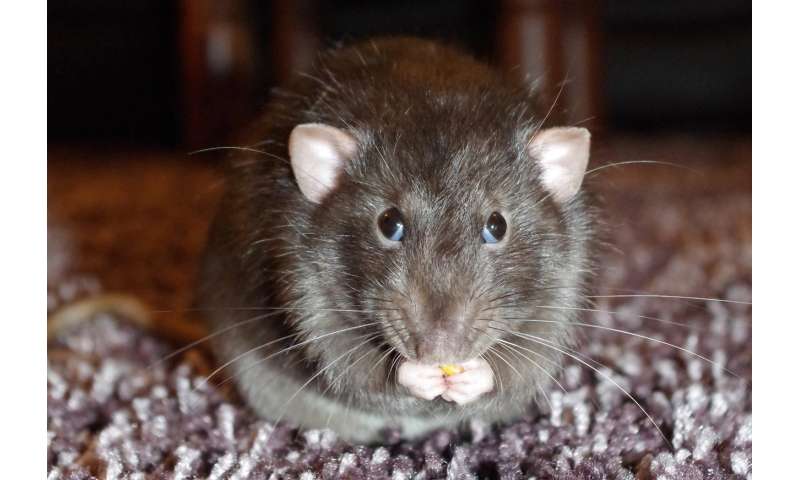Rats are using the same brain region people use to empathize with others

Rats are amazing at avoiding dangers. What is their secret? Could empathy be a contributing factor? This is what a group of researchers from the Netherlands Institute for Neuroscience investigated. Their study shows that rats can use other rats as danger antennas by attending to the emotions of the rats around them. With this finding, new targets for treatment of empathy disorders in humans, such as psychopathy and fronto-temporal dementia, could someday be possible.
In contrast to the idea of empathy being a one-way street in which one person shares in the pain of another, the researchers discovered a more interactive process in which animals align their emotions by mutual influences. They put two rats face to face, and then startled one of them (the demonstrator) with a brief electrical stimulation of the paws. They then observed the reaction of both rats. “The first thing you see is, upon witnessing its neighbor jump, the bystander suddenly looks scared, as well. The bystander catches the fear of the demonstrator,” says Rune Bruls, one of the two Ph.D. students that performed the study.
In turn, the reaction of the bystander influences how the demonstrator feels about the shock that he experienced. Bystanders that were less scared reduced the fear in their demonstrators. “Fear just jumps from one rat to another,” explains Bruls. “That way, a rat can prepare for danger before they even see it.”
Neural similarity with humans
In humans, witnessing the pain of others activates a region between the two hemispheres that is also active when we feel pain on our own body. This is considered to be one of the core empathy regions in the brain. To see whether this region is the same in rats, the team injected a drug to reduce activity of this area temporarily.
“What we observed was striking: Without the region that humans use to empathize, the rats were no longer sensitive to the distress of a fellow rat. Our sensitivity to the emotions of others is thus perhaps more similar to that of the rat than many may have thought,” explains Professor Christian Keysers, the lead author of the study.
No nepotism
Another remarkable finding is that empathy is independent from whether one subject knows the other. For rats that had never met each other, the emotions of the other rat were as contagious as for rats that had shared the same home for five weeks.
“This really challenges our notions of the origin of empathy,” says Valeria Gazzola, one of the senior authors of the study. Many believe that humans and animals are empathic because sensitivity to the pains of offspring is good for adaptive fitness. This parental care then generalizes to empathizing with your closest friends.
“What our data suggests is that an observer shares the emotions of others because it enables the observer to prepare for danger. It’s not about helping the victim, but about avoiding becoming a victim yourself,” explains Gazzola.
It takes one to know one
Although familiarity with the demonstrator turns out not to play a role in whether a rat reacts empathically or not, previous experience does. Efe Soyman, a postdoc in the lab, compared two groups of observers: one that had experienced electrical stimulation in the past, and one that hadn’t. He found that while the experienced observers showed dramatic levels of empathic fear, the inexperienced ones barely reacted at all to what happened to the demonstrator.
This is important, because it shows that emotional contagion is not an inborn mechanism, but something that must be learned. “Rats are like humans: The more our experiences match those of the people we observe, the more we can empathize with what they feel. It takes one to know one,” Efe concludes.
Source: Read Full Article



